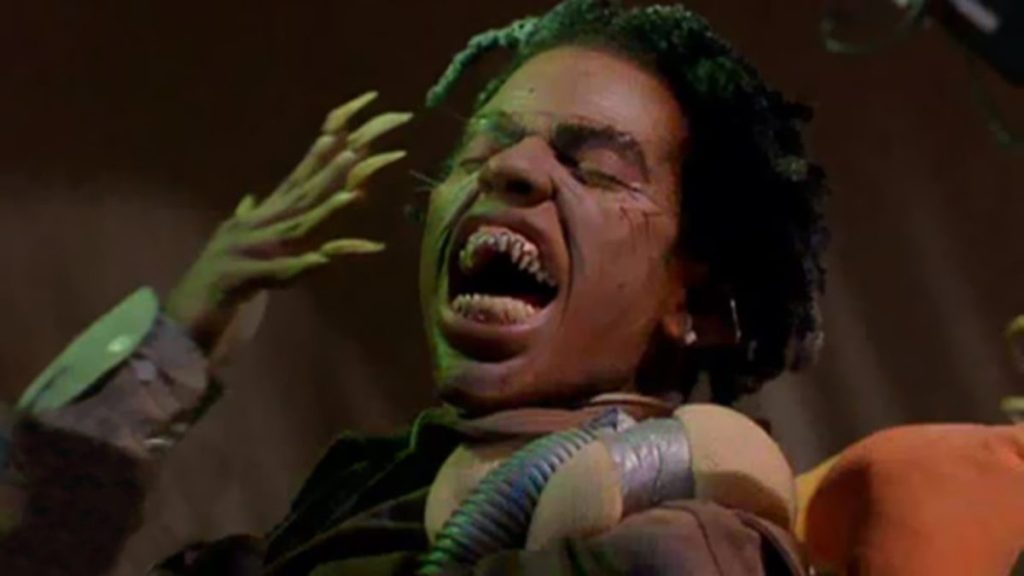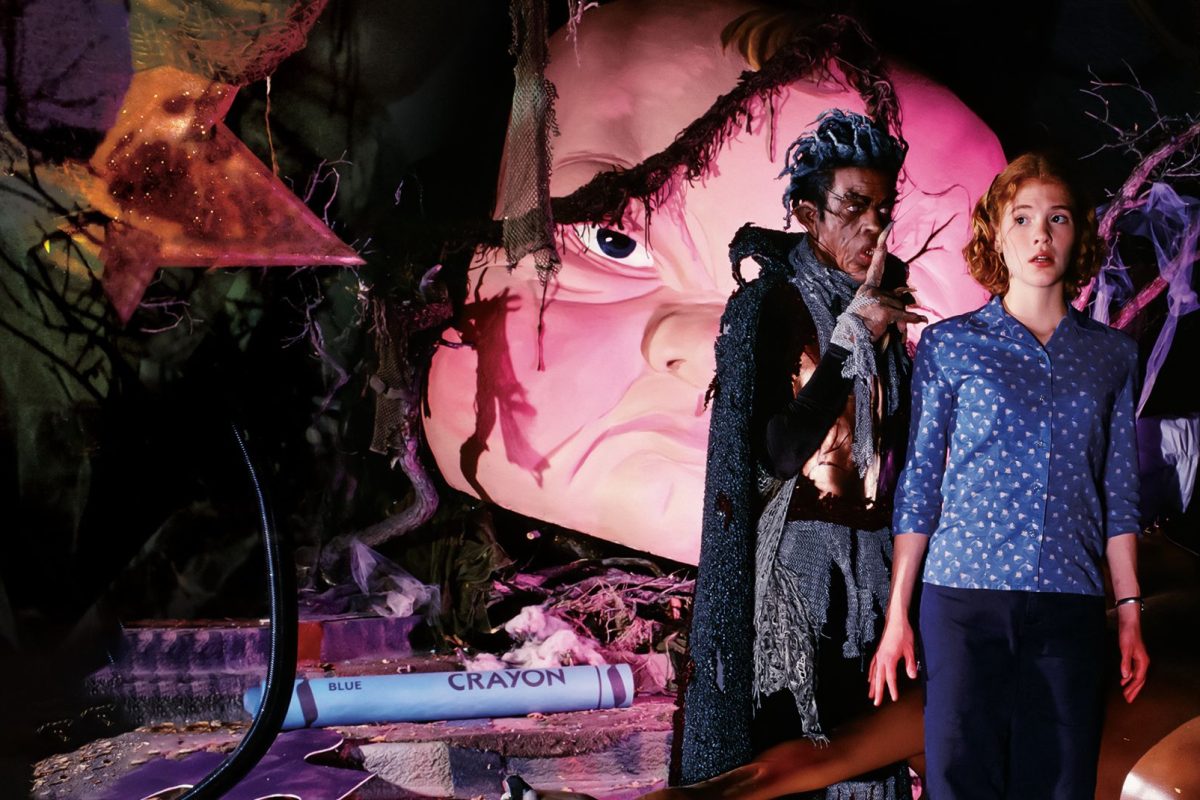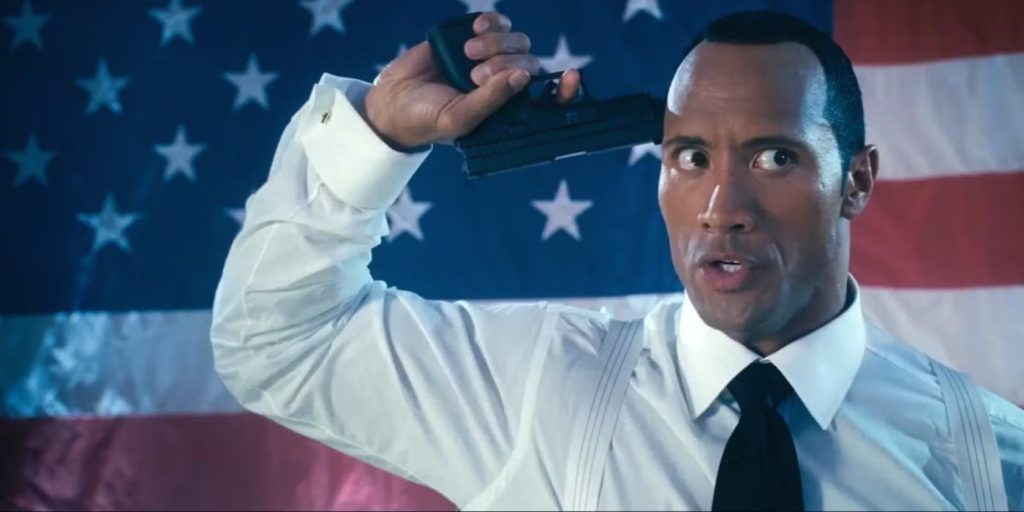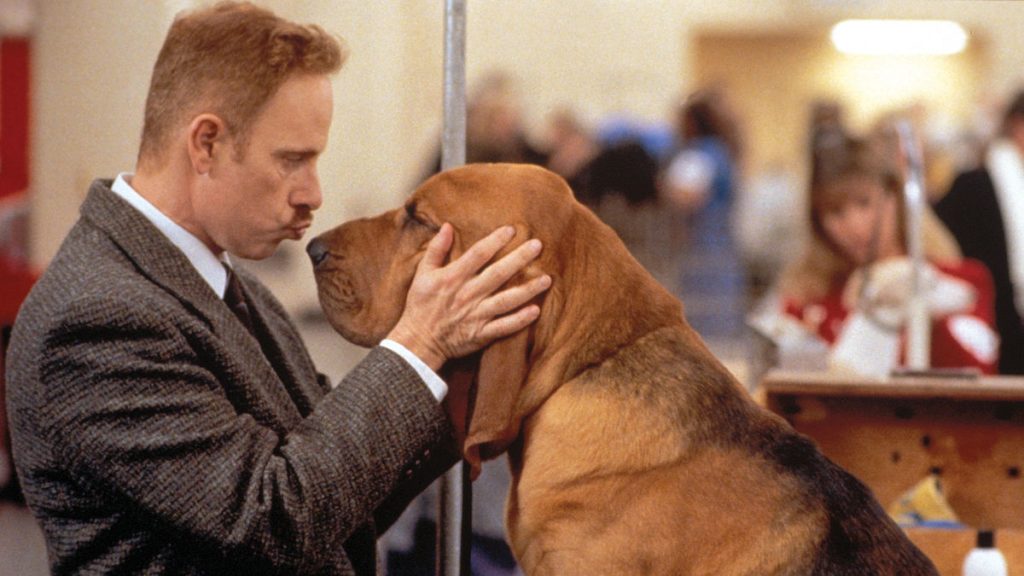Back in the day, Disney Channel Original Movies (or DCOMs, if you like) were event television for the preteen set. During their heyday, they released one every month or so, and they went out all with spooky adventures during the Halloween season. We got Under Wraps in 1997, a comedy about a horror movie fan who befriends a reanimated mummy he names Harold, followed by Halloweentown in 1998, which was so popular it launched a seasonal franchise. Then there was Don’t Look Under the Bed, a legitimately unsettling film that flew too close to the sun. Thanks to complaints from concerned parents, it was rarely rerun on the family-friendly network, and resulted in the Disney Channel playing it way safer with their Halloween content. But you know what? Disney doesn’t realize the gem it has on its hands. The fact that Don’t Look Under the Bed goes way too hard for its young audience is what makes it great.
Frances (Erin Chambers) is a slightly awkward teen growing up in a shockingly average American town – at least, until strange things start happening. First, everyone’s alarm clocks jump forward by three hours. Then the town’s entire population of dogs end up on the roofs of their homes. The high school swimming pool is filled with gelatin. Lockers are spray-painted with a mysterious B. Chaos reigns. And although the quiet, geeky Frances seems like the last person to be at the heart of the town’s problems, she quickly falls under suspicion. And it certainly doesn’t help matters that she can see a young man who calls himself Larry Houdini (Ty Hodges), claims to be an imaginary friend, and is invisible to everyone else. Larry believes that a malevolent Boogeyman is responsible for all of this trouble – a Boogeyman, it seems, who has chosen to target Frances in particular. What’s a Disney girl to do?
Don’t Look Under the Bed is basically kids’ horror in sicko mode. It feels like a throwback to the so-called family-friendly horror movies that traumatized and delighted a generation of kids a decade earlier. The creature design for the Boogeyman is top notch, all long, spindly fingernails and menacing teeth. The surreal quality of not just the horror elements, but the seemingly everyday life of Frances’ family, make Don’t Look Under the Bed feel off-kilter from the very beginning. And it functions as a primer for budding body horror fans, as Larry slowly and agonizingly begins to transform into a Boogeyman, a process experienced by imaginary friends whose children stop believing in them prematurely. In addition to all the horror elements, it also packs a heavy emotional wallop. Frances’ efforts to grow up too quickly are in response to her younger brother’s cancer diagnosis, and her guilt over not being a match to donate bone marrow to him. The idea of trauma and repressed anxiety curdling into a physical manifestation of a monster might not be fully registered by a child, but its emotional implications certainly are. This movie – it’s a lot.

But the fear factor of Don’t Look Under the Bed came at a cost to the Disney Channel. When it first premiered on October 9, 1999, there were some clear indications that there might be trouble. First of all, it was only the second DCOM to earn a TV-PG rating (following Can of Worms, a science fiction TV movie that came out earlier the same year). Director Kenneth Johnson knew that they were treading a very fine line – he spoke to Entertainment Weekly in 2017 about decisions they had made to tone down the Boogeyman and make him a little less frightening. But their efforts to make the film kid-friendly didn’t fully appease Disney executives – or concerned parents. “There were a number of meetings where we’d talked about the tone and what [Disney] wanted it to be — scary but not too scary,” he explained. “That’s the bar we kept trying to find. Everybody thought we had hit it until they started getting derogatory mail after it aired.”
Almost immediately, complaints from parents began pouring in, and Disney brought the hammer down on Don’t Look Under the Bed. They limited how often it was aired on the network – unlike its more sedate counterpart, Halloweentown, which is shown on a loop during the fall season every year, Don’t Look Under the Bed stopped being aired around Halloween back in 2006, and it has only recently been added to Disney+. They also adjusted their production strategy to minimize risk, making sure that all future Halloween releases would meet the standards of even the strictest mom. (Is this early evidence of Disney’s pattern of kowtowing to the demands of audiences, embracing unimaginative but safe ideas at the expense of more interesting projects? Well … yes.)
So now one of the Disney Channel’s most unique, emotionally intelligent original movies is also one of its least seen. Don’t Look Under the Bed may be well-remembered by former Disney kids who were a very specific age when it first came out, but it’s been largely buried in the network’s larger canon. Shunned by reactionary parents for the very qualities that make it so much fun, Don’t Look Under the Bed represents one of Disney Channel’s most imaginative outings, as well as a reminder of how ruthlessly fickle the network can be in disavowing one of its creations at the first sign of parental discontent.
“Don’t Look Under the Bed” is streaming on Disney+.



